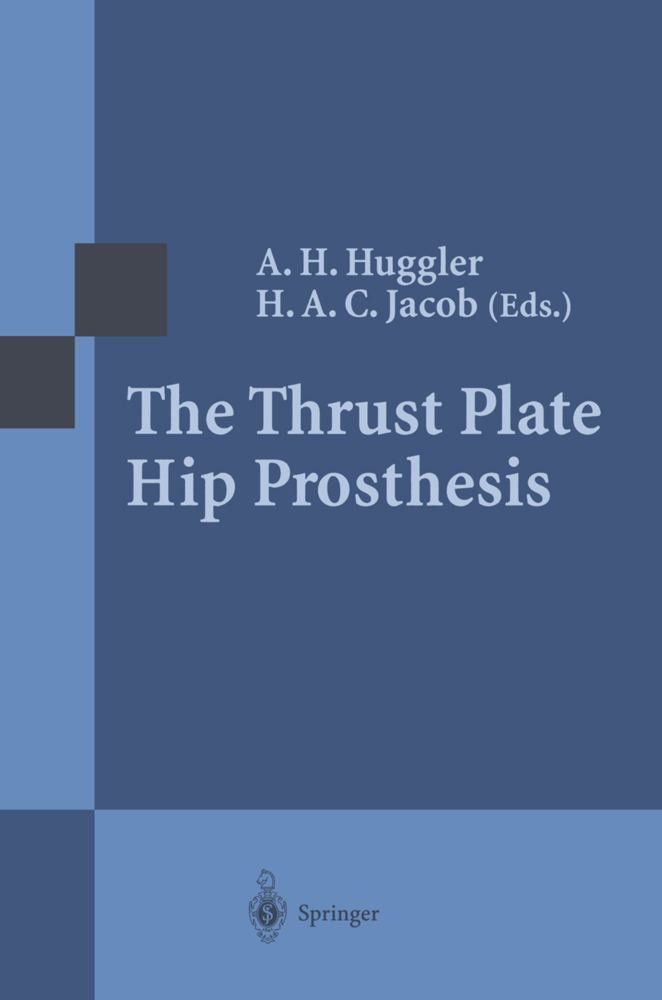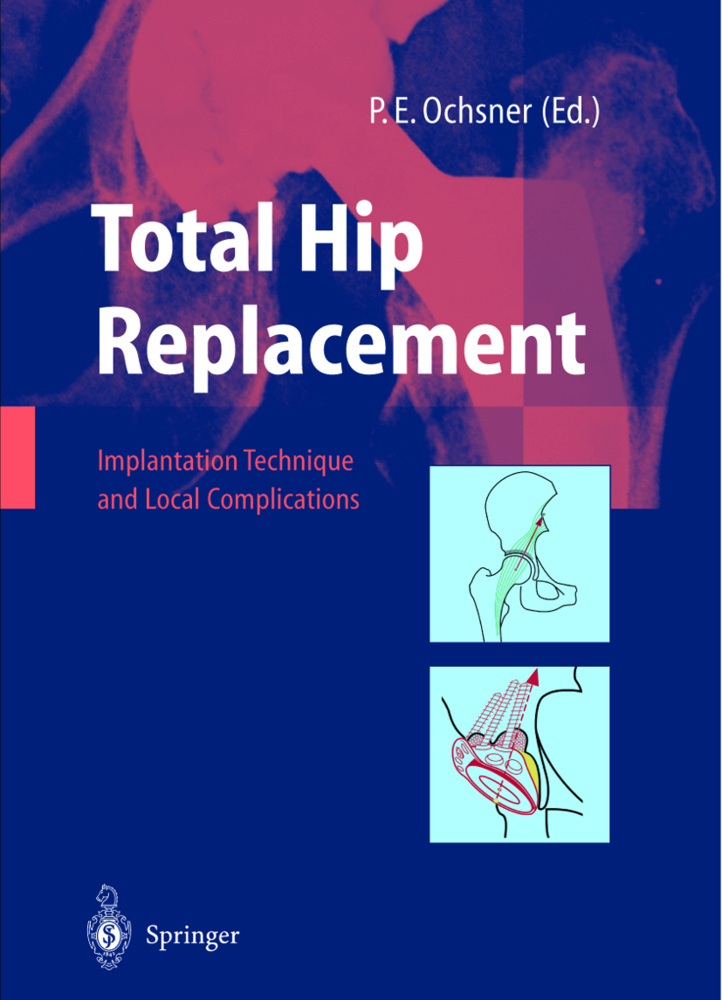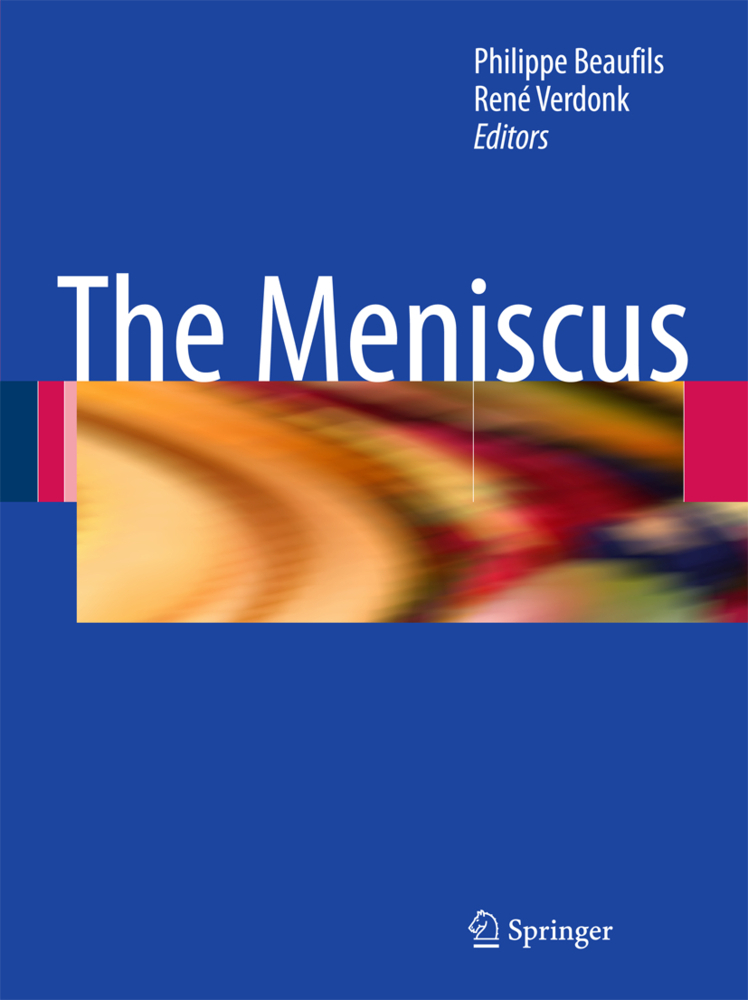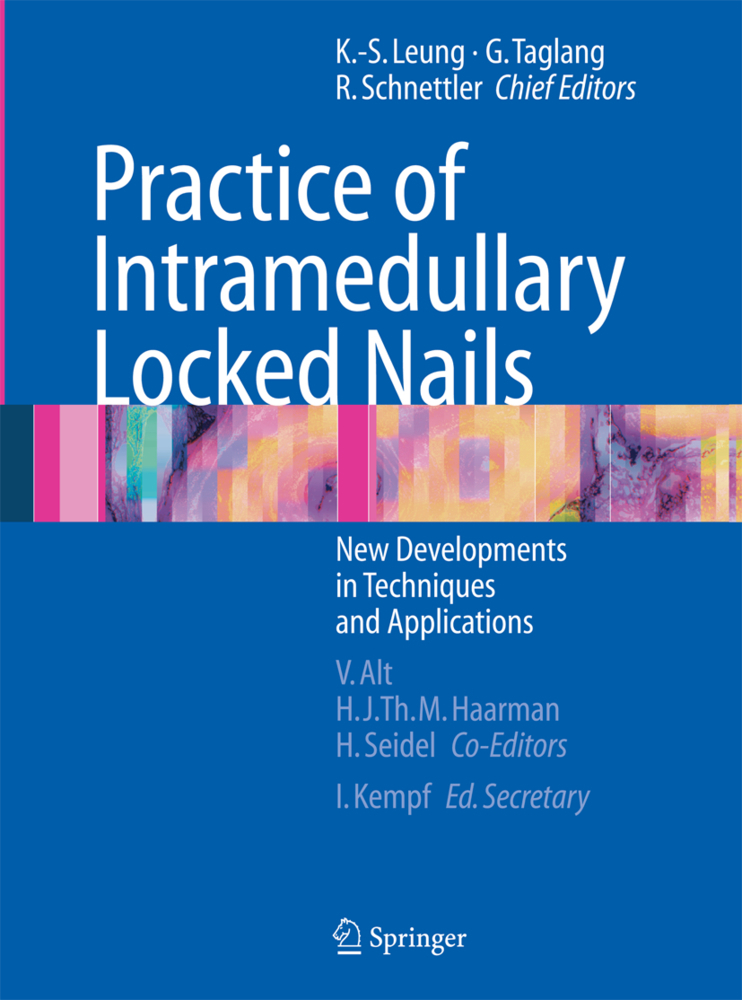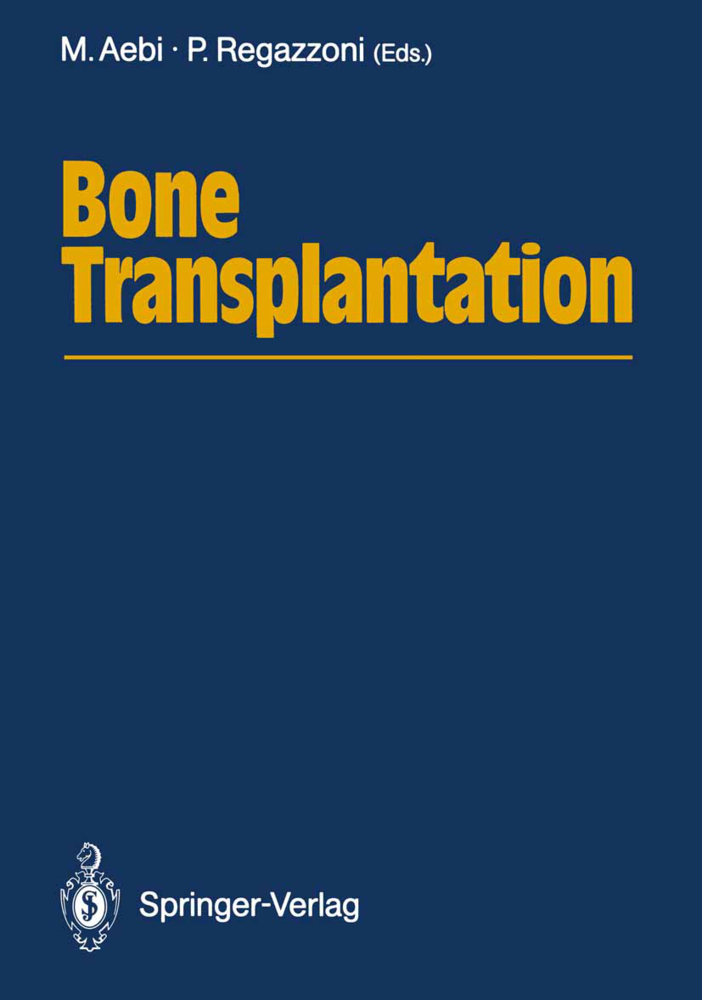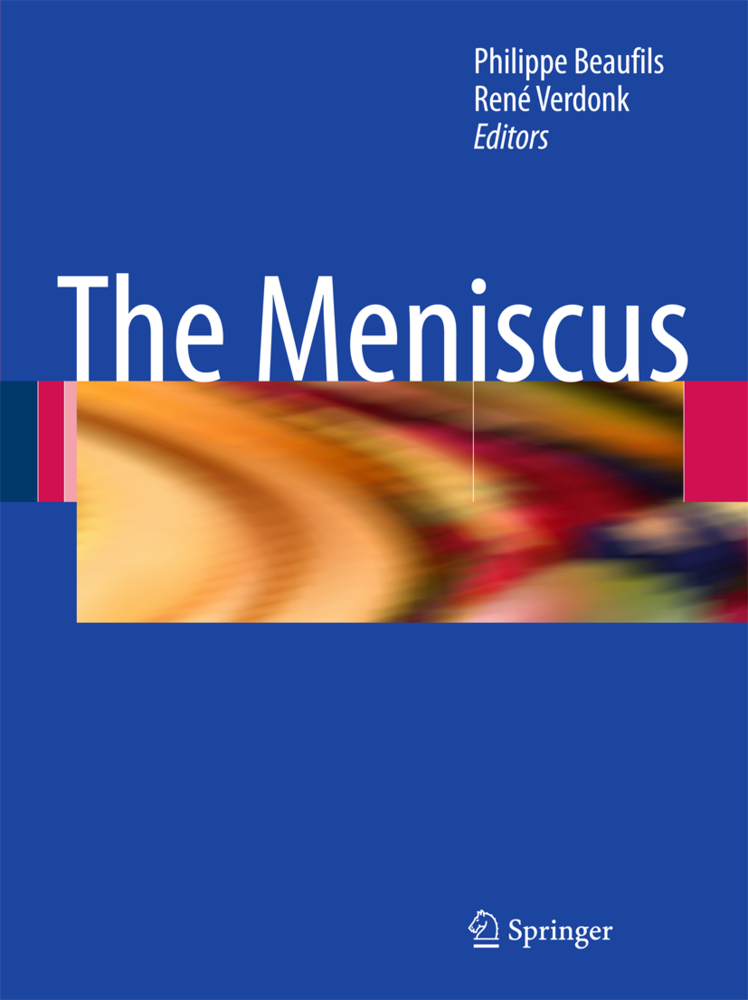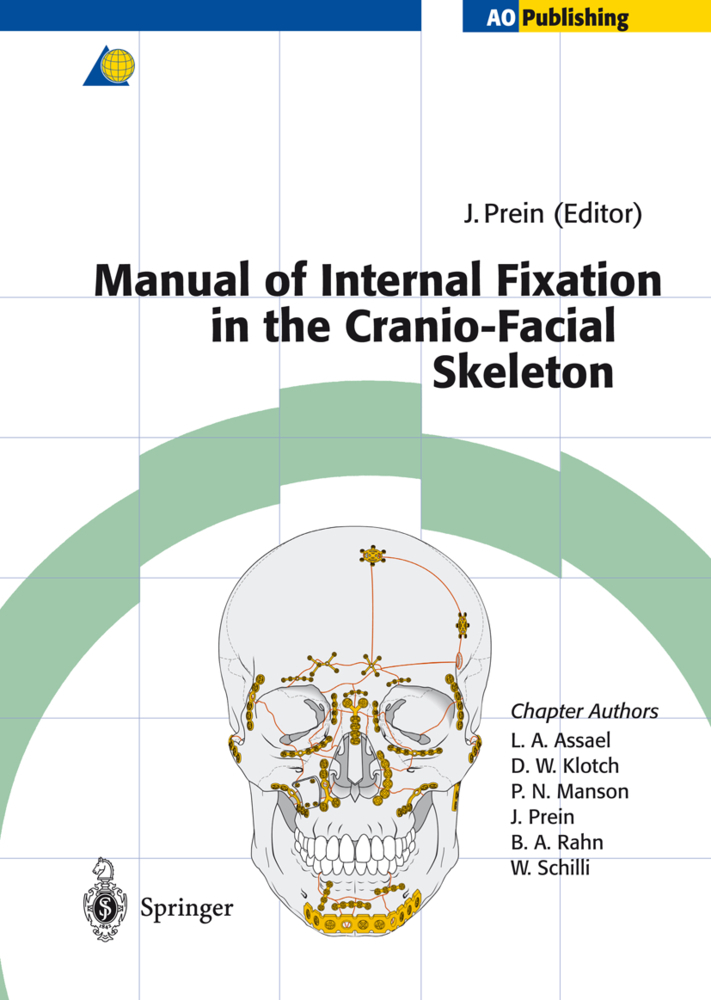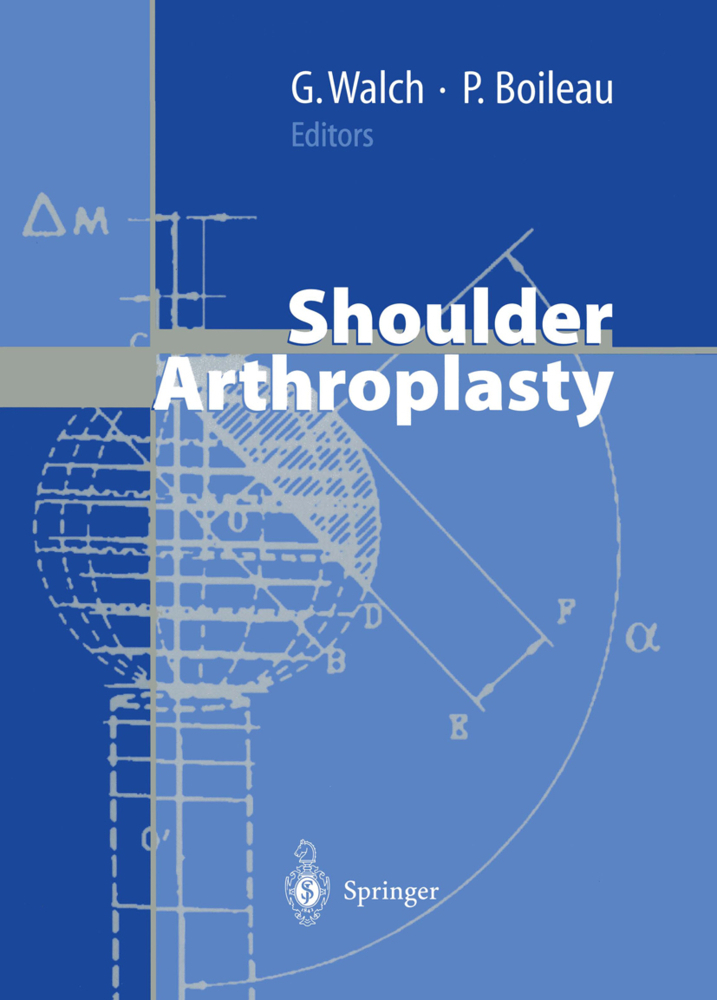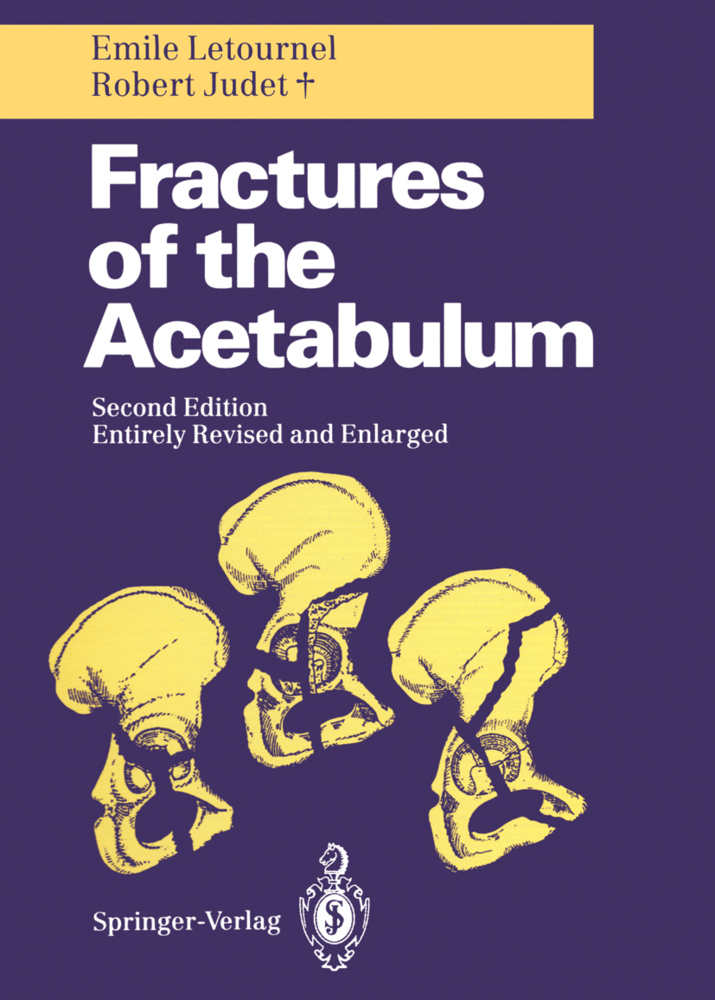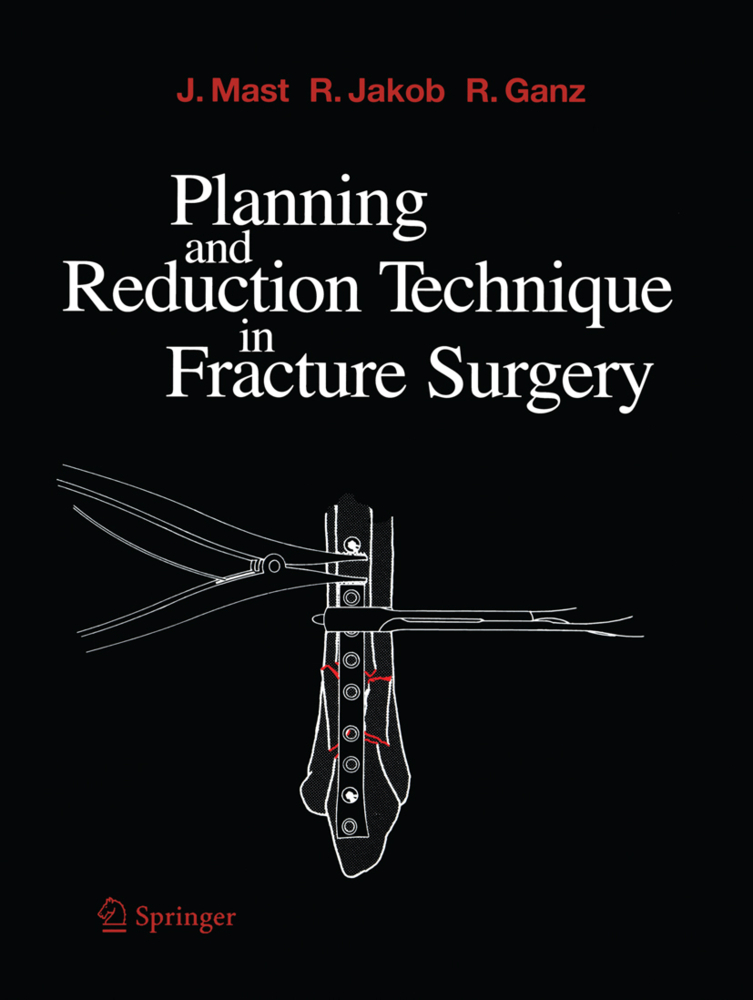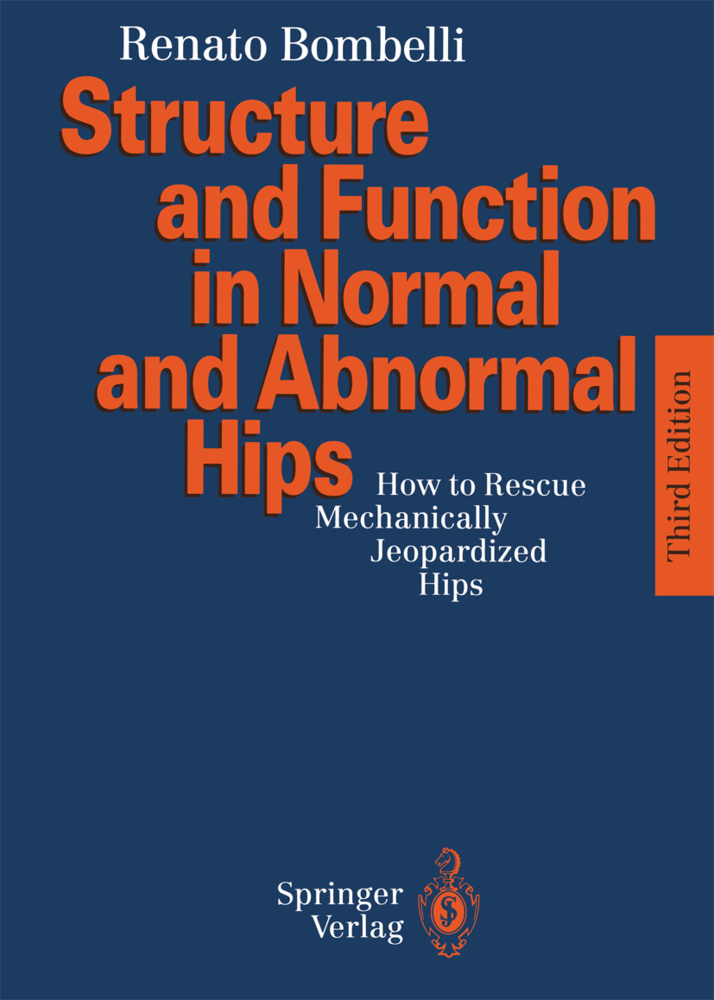The Thrust Plate Hip Prosthesis
The Thrust Plate Hip Prosthesis
As is probably the case with all successful innovations, the unique design of the thrust plate prosthesis (TPP) was not born of a sudden fancy for a radically different hip joint replacement, but emerged from elaborate biomechanical investigations on the loosening of conventional, intramedullarly anchored hip prosthesis shafts. In the 1970s, hip revisions due to loosening of the prostheses became a burden to patients not only physically and psychologically but also economically. This meant that it also became a matter of daily concern to the orthopaedic surgeon, who then had to cope with new, previously unknown problems. Loosening processes were de tected within 5 years of implantation in up to 25% of cases. While implant loosenings were considered to be the result of incorrect handling of materials, we felt that a number of details still had to be considered in regard to the behavior of the entire bone-prosthesis complex and the action of mechanical forces.
3 Finite Element Investigations of the Proximal Femur After Implantation of the Thrust Plate Prosthesis Compared with Findings in a Post-mortem Histological Specimen and in Radiological Follow-Up Examinations
4 Histology of the Thrust Plate-Bone Interface
5 The First-Generation Thrust Plate Prosthesis: Long-Term Results of a Clinical Pilot Study of 20 Cases
6 The Second-Generation Thrust Plate Prosthesis from 1988 to 1992
7 Special Indications and Complications with the Implantation of the Thrust Plate Prosthesis
8 Bone Remodelling of the Proximal Femur After Implantation of a Thrust Plate Prosthesis
9 The Thrust Plate Prosthesis in Osteological Disorders
10 The Limits of Indications for the Thrust Plate Prosthesis
11 Our Experience with the Thrust Plate Prosthesis
12 Chemical Reactions at Titanium Surfaces
13 Material Combinations with Polyethylene and Metasul for Articulating Implants.
1 The Thrust Plate Prosthesis: A New Experience in Hip Surgery
2 Biomechanical Principles and Design Details of the Thrust Plate Prosthesis3 Finite Element Investigations of the Proximal Femur After Implantation of the Thrust Plate Prosthesis Compared with Findings in a Post-mortem Histological Specimen and in Radiological Follow-Up Examinations
4 Histology of the Thrust Plate-Bone Interface
5 The First-Generation Thrust Plate Prosthesis: Long-Term Results of a Clinical Pilot Study of 20 Cases
6 The Second-Generation Thrust Plate Prosthesis from 1988 to 1992
7 Special Indications and Complications with the Implantation of the Thrust Plate Prosthesis
8 Bone Remodelling of the Proximal Femur After Implantation of a Thrust Plate Prosthesis
9 The Thrust Plate Prosthesis in Osteological Disorders
10 The Limits of Indications for the Thrust Plate Prosthesis
11 Our Experience with the Thrust Plate Prosthesis
12 Chemical Reactions at Titanium Surfaces
13 Material Combinations with Polyethylene and Metasul for Articulating Implants.
Huggler, A. H.
Jacob, Hilaire A.C.
| ISBN | 9783642644337 |
|---|---|
| Artikelnummer | 9783642644337 |
| Medientyp | Buch |
| Auflage | Softcover reprint of the original 1st ed. 1997 |
| Copyrightjahr | 2011 |
| Verlag | Springer, Berlin |
| Umfang | 148 Seiten |
| Abbildungen | XII, 148 p. 7 illus. in color. |
| Sprache | Englisch |

